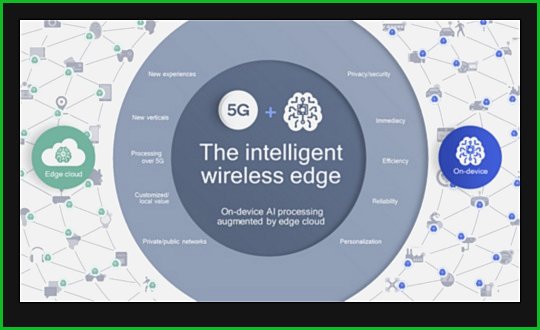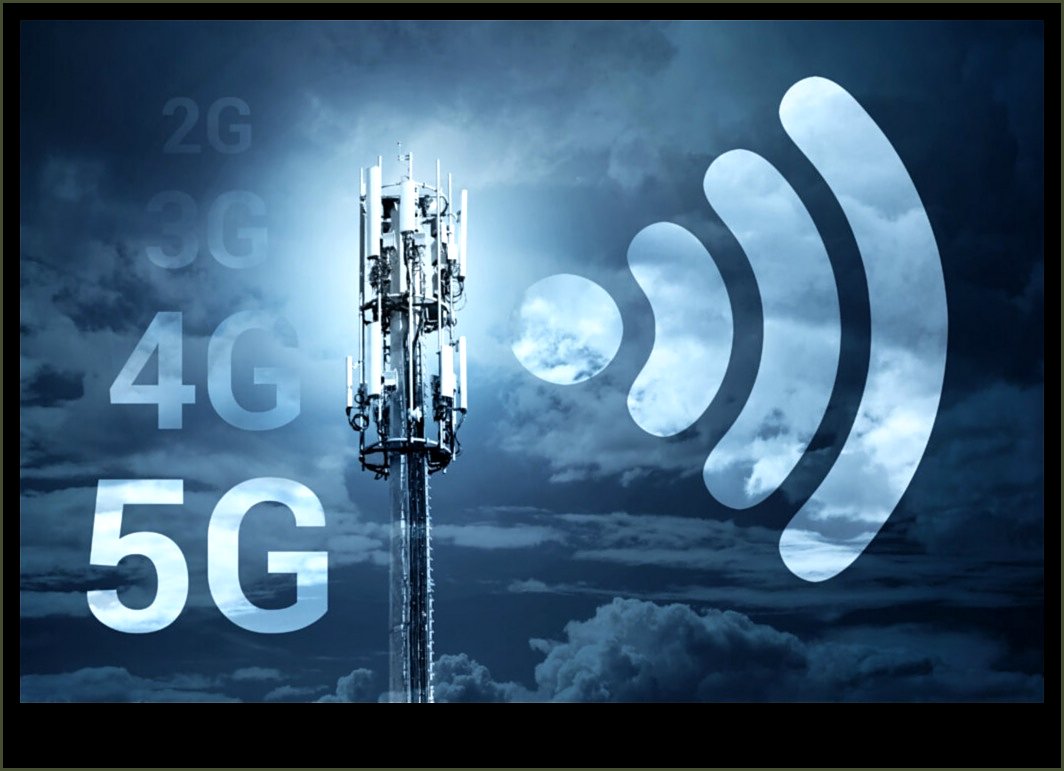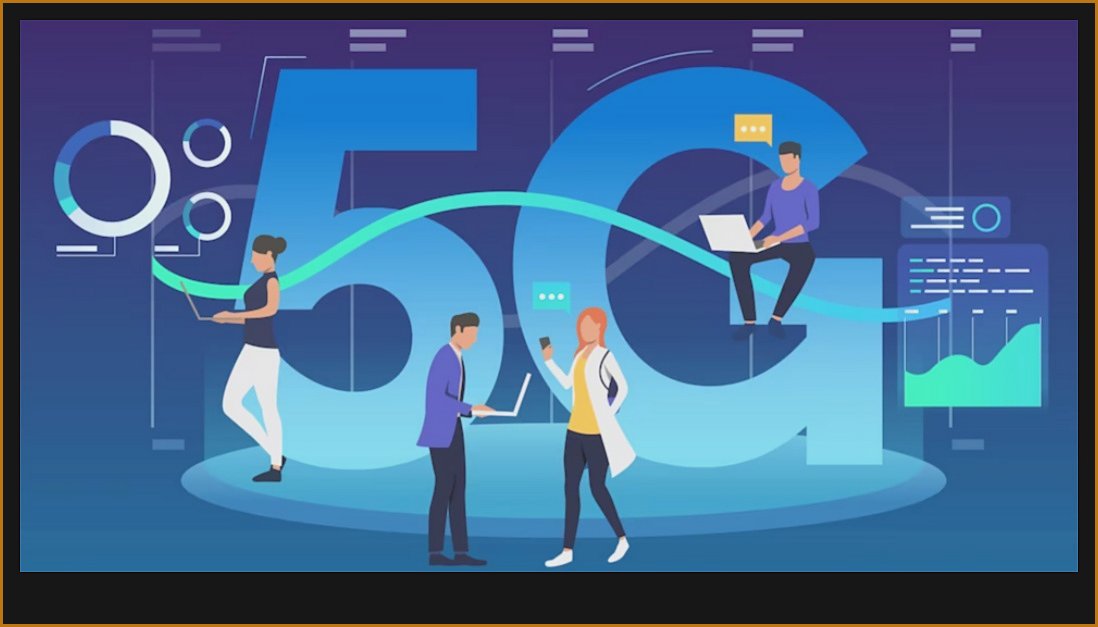
5G is the next generation of wireless technology that promises to deliver much faster speeds, lower latency, and greater capacity than 4G. This will enable a wide range of new applications and services, such as immersive virtual reality (VR), self-driving cars, and smart cities.
5G architects are responsible for designing and building the networks that will support these new applications. They need to have a deep understanding of the technologies that are used to build 5G networks, as well as the challenges that 5G architects face.
Some of the challenges that 5G architects face include:
- The need to design networks that can support high data rates and low latency
- The need to manage the massive amount of data that will be generated by 5G devices
- The need to ensure that 5G networks are secure
Despite these challenges, 5G is a promising technology that has the potential to revolutionize the way we live and work. 5G architects are playing a vital role in making this future a reality.
| 5G Architects | Building Tomorrow’s Connected Experiences with Innovative Technologies |
|---|---|
| Introduction to 5G Networks | 5G is the fifth generation of wireless technology, and it promises to deliver much faster speeds, lower latency, and greater capacity than previous generations of wireless networks. 5G is expected to play a major role in the development of new connected devices and applications, and it has the potential to revolutionize the way we live and work. |
| Benefits of 5G Networks |
The benefits of 5G networks include:
Faster speeds: 5G networks can deliver speeds of up to 10 gigabits per second, which is more than 100 times faster than the average 4G speed. This increased speed will allow for new applications such as streaming high-definition video and virtual reality. |
| Applications of 5G Networks |
5G networks are expected to be used for a wide variety of applications, including:
Mobile gaming: 5G’s high speeds and low latency will make mobile gaming a much more immersive experience. |

II. Benefits of 5G Networks
5G networks offer a number of benefits over previous generations of wireless networks, including:
- Higher speeds: 5G networks can provide peak data rates of up to 10 gigabits per second (Gbps), which is more than 100 times faster than the average 4G speed.
- Lower latency: 5G networks have significantly lower latency than 4G networks, which means that data can be transmitted more quickly and reliably. This is important for applications such as real-time gaming and virtual reality.
- Greater capacity: 5G networks can support a much higher number of devices than 4G networks, which is essential for applications such as the Internet of Things (IoT).
- Enhanced security: 5G networks use a number of security features that are not available on 4G networks, making them more secure against cyberattacks.
These benefits make 5G networks ideal for a wide range of applications, including:
- Mobile gaming
- Virtual reality
- Streaming video
- The Internet of Things
- Self-driving cars
5G networks are still in their early stages of development, but they have the potential to revolutionize the way we live and work. As 5G networks become more widespread, we can expect to see new and innovative applications that take advantage of the high speeds, low latency, and greater capacity that 5G offers.
III. Applications of 5G Networks
5G networks are expected to enable a wide range of new applications and services, including:
- Enhanced mobile broadband (eMBB): This will provide faster data speeds and lower latency for mobile devices, making it possible to stream high-definition video, play online games, and download large files more quickly.
- Ultra-reliable low-latency communications (URLLC): This will enable mission-critical applications that require very high reliability and low latency, such as self-driving cars and industrial automation.
- Massive machine-type communications (mMTC): This will allow a large number of devices to connect to the network and exchange data, such as sensors in industrial settings or smart meters in homes.
5G networks will also play a role in supporting new and emerging technologies, such as virtual reality (VR) and augmented reality (AR). These technologies will require high-bandwidth and low-latency networks in order to provide a seamless experience for users.
The potential benefits of 5G are significant, and it is expected to have a major impact on a wide range of industries. By enabling new applications and services, 5G networks will help to improve productivity, create new jobs, and make our lives more convenient.
Benefits of 5G Networks
5G networks offer a number of benefits over previous generations of wireless networks, including:
- Increased speed: 5G networks can provide peak data rates of up to 10 gigabits per second (Gbps), which is more than 100 times faster than the typical 4G speed of 100 megabits per second (Mbps).
- Lower latency: 5G networks can offer latency as low as 1 millisecond, which is comparable to the speed of light. This makes 5G ideal for applications that require real-time communication, such as self-driving cars and industrial automation.
- Greater capacity: 5G networks can support a much larger number of devices than previous generations of wireless networks. This is due to the use of new spectrum bands, which are less congested than the spectrum bands used by 4G networks.
- Enhanced security: 5G networks use a number of security features that are designed to protect against cyberattacks. These features include end-to-end encryption, network slicing, and device authentication.
These benefits make 5G networks ideal for a wide range of applications, including:
- Mobile gaming
- Virtual reality (VR) and augmented reality (AR)
- Self-driving cars
- Industrial automation
- Remote healthcare
5G networks are still in their early stages of development, but they have the potential to revolutionize the way we live and work. By providing faster speeds, lower latency, greater capacity, and enhanced security, 5G networks will enable a new era of connected experiences.
5. 5G Standards
5G is a new wireless technology standard that is being developed by the 3rd Generation Partnership Project (3GPP). The goal of 5G is to provide a much faster, more reliable, and more consistent wireless experience than previous generations of wireless technology.
5G is based on a new set of air interface technologies that are designed to support much higher data rates and lower latency than previous generations of wireless technology. 5G networks are also expected to be more reliable and consistent than previous generations, thanks to new features such as network slicing and carrier aggregation.
The 3GPP has released a number of 5G standards, including:
- Release 15: The first 5G standard, released in June 2018. Release 15 defines the basic features of 5G, including the new air interface technologies and the new features such as network slicing and carrier aggregation.
- Release 16: The second 5G standard, released in June 2019. Release 16 adds new features to 5G, including support for higher data rates and lower latency.
- Release 17: The third 5G standard, released in June 2020. Release 17 adds new features to 5G, including support for massive machine-type communications (mMTC) and ultra-reliable low-latency communications (URLLC).
The 3GPP is currently working on the fourth 5G standard, Release 18. Release 18 is expected to be released in June 2021. Release 18 is expected to add new features to 5G, including support for new use cases such as industrial automation and autonomous vehicles.
5G is a major new wireless technology standard that is expected to have a significant impact on the way we live and work. 5G networks are expected to be faster, more reliable, and more consistent than previous generations of wireless technology. This will enable new applications and services that were not possible with previous generations of wireless technology.

6. FAQ
Q: What is a 5G architect?
A: A 5G architect is a telecommunications engineer who specializes in the design, implementation, and optimization of 5G networks.
Q: What are the benefits of 5G networks?
A: 5G networks offer a number of benefits over previous generations of wireless networks, including:
* Increased speed: 5G networks can provide peak data rates of up to 10 gigabits per second (Gbps), which is significantly faster than 4G networks.
* Lower latency: 5G networks have lower latency than 4G networks, which means that data can be transmitted more quickly. This is important for applications such as real-time gaming and video streaming.
* Greater capacity: 5G networks can support more devices than 4G networks, which is important for applications such as the Internet of Things (IoT).
Q: What are the applications of 5G networks?
A: 5G networks are being used for a variety of applications, including:
* Mobile broadband: 5G networks can provide high-speed mobile broadband access for users on the go.
* Fixed wireless access: 5G networks can be used to provide fixed wireless access for homes and businesses that do not have access to fiber optic or cable broadband.
* Industrial automation: 5G networks can be used to connect industrial machines and devices, enabling the development of smart factories and other industrial applications.
* Virtual reality and augmented reality: 5G networks can provide the high-bandwidth and low-latency needed for immersive virtual reality and augmented reality experiences.
Q: What are the challenges facing 5G architects?
A: 5G architects face a number of challenges, including:
* The need to develop new technologies to support the high speeds and low latency of 5G networks.
* The need to manage the massive amount of data that will be generated by 5G networks.
* The need to ensure the security of 5G networks.
Q: What is the future of 5G networks?
A: 5G networks are expected to play a major role in the future of telecommunications. They are expected to be used for a variety of applications, including mobile broadband, fixed wireless access, industrial automation, virtual reality and augmented reality, and more.
Q: What are some FAQs about 5G networks?
A: Here are some FAQs about 5G networks:
* What is 5G?
* What are the benefits of 5G networks?
* What are the applications of 5G networks?
* What are the challenges facing 5G architects?
* What is the future of 5G networks?
5G Security
5G security is a critical issue that must be addressed in order to ensure the safety and reliability of 5G networks. The unique features of 5G networks, such as their high speed, low latency, and massive connectivity, introduce new security challenges that must be addressed.
Some of the key security challenges for 5G networks include:
- DDoS attacks: 5G networks are more vulnerable to DDoS attacks than previous generations of networks due to their larger size and greater number of connections.
- Man-in-the-middle attacks: 5G networks are more vulnerable to man-in-the-middle attacks due to the use of unlicensed spectrum.
- Spoofing attacks: 5G networks are more vulnerable to spoofing attacks due to the use of dynamic IP addresses.
- Fraudulent traffic: 5G networks are more vulnerable to fraudulent traffic due to the use of new applications and services.
- Data breaches: 5G networks are more vulnerable to data breaches due to the large amount of data that is transmitted over the network.
In order to address these security challenges, 5G networks must implement a number of security measures, such as:
- Encryption: All data transmitted over 5G networks must be encrypted to protect it from unauthorized access.
- Authentication: All devices that connect to 5G networks must be authenticated to ensure that they are authorized to access the network.
- Authorization: Devices that are authenticated to access 5G networks must be authorized to access specific services and resources.
- Access control: Access to 5G networks must be controlled to prevent unauthorized users from accessing the network.
- Intrusion detection and prevention: 5G networks must be monitored for suspicious activity and intrusions must be prevented or mitigated.
By implementing these security measures, 5G networks can be made more secure and protect the data and devices that are connected to the network.

5G Cost
The cost of 5G networks is a major concern for many businesses and consumers. However, the cost of 5G is declining rapidly, and it is expected to be comparable to the cost of 4G networks by 2023.
There are a number of factors that contribute to the cost of 5G networks, including the cost of the equipment, the cost of the spectrum, and the cost of deployment.
The cost of the equipment is declining rapidly as 5G technology becomes more mature. The cost of spectrum is also declining, as more and more spectrum is being auctioned off for 5G use. The cost of deployment is also declining, as 5G networks are being built out using existing infrastructure.
As a result of these factors, the cost of 5G networks is expected to be comparable to the cost of 4G networks by 2023. This will make 5G more affordable for businesses and consumers, and it will help to drive the adoption of 5G technology.
IX. 5G Future
5G is still in its early stages of development, but it has the potential to revolutionize the way we live and work. Here are some of the ways that 5G is expected to impact the future:
- 5G will enable faster and more reliable connectivity, which will open up new possibilities for mobile gaming, streaming video, and other real-time applications.
- 5G will support a wider range of devices, including self-driving cars, drones, and industrial robots.
- 5G will make it possible to connect to the internet from anywhere in the world, even in remote areas.
- 5G will help to improve security and privacy by making it more difficult for hackers to intercept data.
- 5G will create new opportunities for businesses and entrepreneurs to develop innovative new products and services.
The full potential of 5G is still being explored, but it is clear that this technology has the power to change the world in a number of ways.
X. FAQ
Q1: What is 5G?
5G is the fifth generation of wireless technology, and it promises to deliver much faster speeds, lower latency, and greater capacity than previous generations of wireless technology. 5G is expected to revolutionize the way we live and work, enabling new applications such as self-driving cars, virtual reality, and augmented reality.
Q2: What are the benefits of 5G networks?
The benefits of 5G networks include:
- Faster speeds: 5G networks can deliver speeds up to 100 times faster than 4G networks.
- Lower latency: 5G networks have lower latency, which means that data can be transmitted more quickly.
- Greater capacity: 5G networks have greater capacity, which means that they can support more devices and users.
Q3: What are the applications of 5G networks?
5G networks are expected to enable a wide range of new applications, including:
- Self-driving cars: 5G networks will provide the high-speed data connection that self-driving cars need to operate safely.
- Virtual reality: 5G networks will provide the low latency and high bandwidth that virtual reality applications require.
- Augmented reality: 5G networks will provide the high-speed data connection that augmented reality applications require.